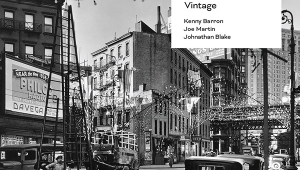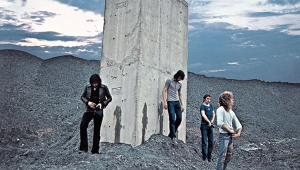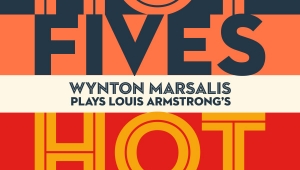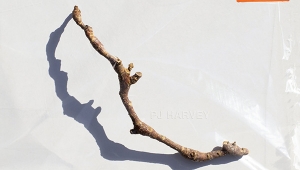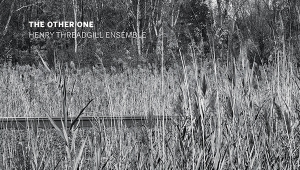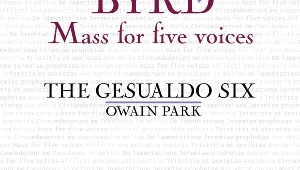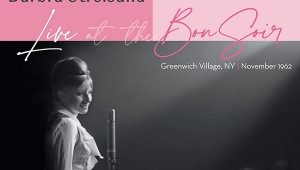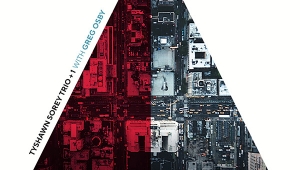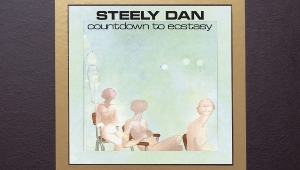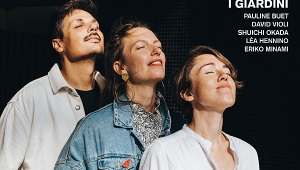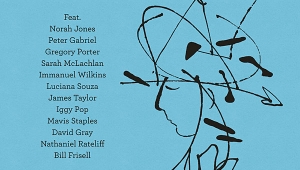| Columns Retired Columns & Blogs |
Recording of March 2003: Mambo Sinuendo
RY COODER & MANUEL GALBÁN: Mambo Sinuendo
Perro Verde/Nonesuch 79691-2 (CD). 2003. Ry Cooder, prod.; Jerry Boys, eng. AAD? TT: 50:31
Performance ****?
Sonics ****
Perro Verde/Nonesuch 79691-2 (CD). 2003. Ry Cooder, prod.; Jerry Boys, eng. AAD? TT: 50:31
Performance ****?
Sonics ****
When it was announced in 2002 that Ry Cooder was going back to Cuba to make a third record of music from that frozen-in-time musical terrarium of the western hemisphere, it was sure to mean one of two things: either enough time had passed since 1997's breakthrough Buena Vista Social Club that it would work, or, more fatefully, no well of music was this deep, and Cooder had unwisely gone back one time too many.
 But then, Ry Cooder ain't your average, garden-variety musical genius—not by a long shot. Once a reluctant rock star, more recently a reticent SoCal legend, he's a tremendously skilled guitarist who, at least in his Cuban adventures, has had no problem checking his ego at the door to play with older players who force him to stretch, learn, and challenge himself. So if Cooder was returning to Cuba, there must be quite a reason.
But then, Ry Cooder ain't your average, garden-variety musical genius—not by a long shot. Once a reluctant rock star, more recently a reticent SoCal legend, he's a tremendously skilled guitarist who, at least in his Cuban adventures, has had no problem checking his ego at the door to play with older players who force him to stretch, learn, and challenge himself. So if Cooder was returning to Cuba, there must be quite a reason.
In guitarist Manuel Galbán, Cooder has uncovered yet another long-lost Cuban treasure. The two musicians are clearly simpatico, and just as clearly, Cooder respects Galbán enough to give him—another guitar player, no less—the unquestioned spotlight.
Raised in the Holguin province of western Cuba, Manuel Galbán began playing guitar professionally in 1944, at the age of 13. In 1963 he joined the Havana-based vocal group Los Zafiros, who mixed Caribbean forms such as Calypso and Bolero with more American musical forms, such as R&B and doo-wop. The band was a huge hit early in its career, but disbanded after Galbán left in 1972. Since then, the guitarist, who also plays piano and organ, has played and arranged for several Cuban groups, most notably the Dirección Nacional de Música (the Cuban National Music Ensemble).
Galbán did not take part in the original Buena Vista project; he met Cooder when both played on the 1999 solo album by Buena Vista Social Club singer Ibrahim Ferrer. Unlike Compay Segundo and Eliades Ochoa, who, with Cooder, played most of the guitar on Buena Vista, Galbán plays in a unique electric style that borrows from Duane Eddy and surf guitarist Dick Dale, and sometimes sounds like a more laconic version of Nokie Edwards of the Ventures. Throughout Mambo Sinuendo, Cooder lays back, content to add accents and follow Galbán's lead.
The characteristic rhythmic vitality of Cuban music, as heard in Buena Vista, is heard throughout Mambo Sinuendo as well, thanks to the inestimable American rock drummer Jim Keltner, percussionist Joachim Cooder (Ry's son), conguero Angá Diaz, and bassist Orlando "Cacchaíto" López. But this is a guitar album. Not a loud guitar album, but an almost noodly (in a good way), understated, very deeply funky collection that is nearly surf rock in places, very nearly "Sleepwalk" in others.
In the first track, "Du Me Negrita," echo drenches both Galbán's single-note leads and Cooder's Bixby pedal-steel accents, while Keltner keeps just the right amount of dirty-sounding cymbal slush happening in the background. In the jumpier "Monte a Dentro," a chorus of female backup singers adds vocal accents before Galbán leaps in to rip off a fast example, dense in ideas, of what Cooder calls his "tough" guitar style. Galbán then shows a tender touch in the gorgeous "Secret Love." On "Caballo Viejo," Galbán shows off his way with the organ.
The album's only familiar number—at least to gringos—is "Patricia," which was a hit for Cuban mambo king and 1950s big-band leader-arranger Pérez Prado. In Galbán's reading, an easygoing lead line draws a new mood and feeling from a tune that has too often been denigrated as being mere "pop." But as many and varied as are Mambo Sinuendo's charms, its highlight is the sprightly but too short title tune, which features all the album's musical elements—female voices, Galbán on organ (with burbly effects), and one new addition: trumpets.
When Cooder first explained to me his fairly involved theory of the sort of sound he likes, I had to go back and listen closely to Mambo Sinuendo to reassure myself that he and engineer Jerry Boys hadn't sucked the life out of the music in their quest for what Cooder calls the "bubble." (See feature story on p.49). Happily, the sound is huge, spacious, and every bit the "bubble" Cooder wanted. On "Bolero Sonambulo," the famed nuances of Havana's cavernous Egrem studios makes for a wide and very tall listening experience. Like those of all the Buena Vista-related albums, the textures of Mambo Sinuendo's rhythm sections and guitars are extraordinary.
Cuba has been, to quote Garrett Morris from the old Saturday Night Live, "Berry, berry good" to Ry Cooder, and to everyone interested in the fabulous, nearly extinct musical traditions of this culturally rich island. While it may have seemed logical that, five years after Buena Vista Social Club, the wellspring of Cuban masters needing rediscovery had finally run dry, with Mambo Sinuendo and fellow guitarist Manuel Galbán, Cooder has found and invested in his most personal and challenging Cuban collaboration yet.—Robert Baird
- Log in or register to post comments


